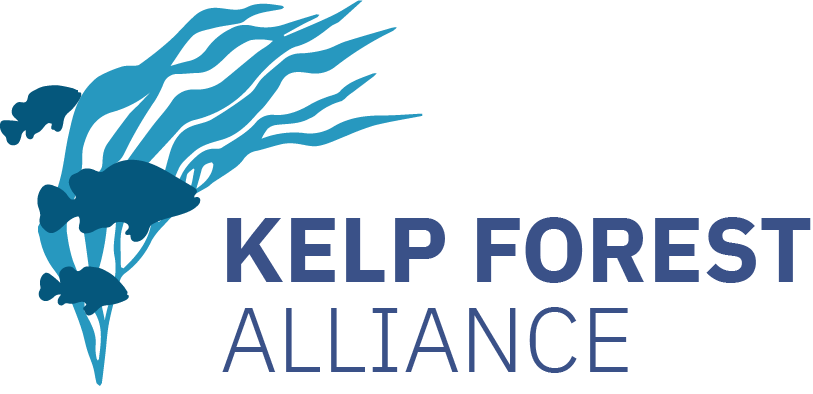Key takeaways
Green gravel trials have demonstrated the effectiveness of the method to seed small areas of degraded turf reefs with kelp.
The addition of substrates to degraded reefs dominated by turf algae can promote restoration success by overcoming turf growth that prevents natural recruitment.
Backround
‘Green gravel’ is a restoration method that aims to allow young kelps to be seeded over large areas without extensive scuba diving. The goal of green gravel is to develop a way to reseed turf reefs, where little to no available rock surface remains for natural recruitment. This technique was developed in Skagerrak in southern Norway, a region that had experienced widespread loss of kelp. Kelp loss occurred in the region around 2000-2002, followed by a corresponding increase in dominance by turf algae 1. These declines have been associated with warming temperatures, in particular marine heatwaves, as well as local eutrophication 2. The turfs trap and accumulate substantial amounts of sediment that can prevent recruitment and germination of kelp 3 4.
The project
Restoration trials using green gravel are still in an academic phase. Green gravel was tested at five degraded turf reefs within 20 km of Flødevigen in small plots (1 m2). Trial sites were selected from long-term monitoring sites area surrounding the research station, where kelp was historically present but where the reefs are now turf-dominated (>90% cover) 5.
The green gravel was produced from fertile wild sourced parents collected in Autumn from remnant forests at 5-10 m depth 1-15 km away from test sites. Spore solutions were added to seawater and poured over clean gravel in raceways (Fredriksen et al., 2020). The water flow was reduced in the beginning until spores had settled and attached to the rock. After two weeks, water flow was increased and left running for a period of two to three months. The gravel was then transported in trays and transplanted to sites by divers. The monitoring of these sites was done by divers revisiting the plots three times in the first year of deployment, measuring mortality, the size of the kelp growing on the gravel, and whether any have attached to the underlying rock or turf.
The kelp grew well at three of the five sites, with individuals overgrowing the gravel and attaching to the underlying reef. At 85 days after out-planting, 53% of the gravel retained kelp. After four months, 18% of the gravel with an attached kelp had overgrown the rock and attached to the underlying turf (7%) or rock reef (11%). The most degraded site with the densest turf had 100% mortality of green gravel, even in turf clearings. This was likely a combination of poor water quality and smothering by the dense turfs.
Additional pilot studies and trials in the same area were involved in the development of green gravel and provided some important insights to the conditions under which this tool worked. We found that seasonal timing of deployment was an important factor. Gravel deployed in spring did not succeed, likely because the kelps were outcompeted by other seaweeds that are rapidly growing during this time. Outplanting in winter when turf algae was minimal had the best success. The green gravel worked at both 3 m and 8 m depth and had similar success when deployed from the surface or placed on the seafloor by divers. Surface deployment was more difficult to rigorously monitor as the gravel tended to scatter, so divers were used for many of the experimental trials. To date the total area restored is < 10 m2.
The main people involved in the project are researchers and technicians from the Institute of Marine Research (IMR), working at the Flødevigen Research Station in the Benthic Communities Group. IMR is funded by the Norwegian government, and the restoration project was funded internally as a priority development area within the Benthic Communities Group. The local government is involved in the project through the development of the tool and the permitting process and have also shown interest in expanding this work to a Marine Protected Area (Raet National Park).
Costs are mainly for the hours spent by the researchers, boat, and laboratory fees. The cost of materials was (7 US$ /m2). We estimated that 116 kg green gravel would be enough to restore 314 m2 reef [5 granite gravel /m2 @ ~75 g per gravel]. Producing this quantity of green gravel required 1.5 m2 wet laboratory tanks, 40 hours of laboratory time for culturing and maintaining tanks. Equipment, fuel and materials (but not including facilities, vessel rentals, and bench fees) were approximately $500 USD. Using hourly rates of 30 USD h−1, this totals 6.75 USD per m−2
Lessons learned
The timing for putting gravel into the sea, state of the reef, and reduction of stressors are important for success. In some areas there remains the need to mitigate drivers of kelp loss (e.g., sea urchins, warming temperature) before restoration can be successful. In Norway, this tool was developed for a farmed kelp species and deployed on protected or semi-exposed reefs. In wave exposed sites, small gravel often does not stay on the reef. It is likely that other substrata, such as larger rocks or lines that can wrap on structures or be attached to the reef, will be more suitable seeding tools in these places. Deeper deployments have also worked for small gravel in wave-exposed locations in Portugal.
One main outcome of this work is that these seeding techniques are now being trialed in other regions and systems via the Green Gravel Action Group (www.greengravel.org). This group currently consists of 10 projects/regions in various stages of development.
Figure 1 Quadrat with turf before clearing. © Stein Fredriken
Figure 1 - Same area cleaned with gravel seeded with kelp. © Stein Fredriken
References
6 Burek, K.E., Brien, J.M.O., Scheibling, R.E., 2018. Wasted effort: recruitment and persistence of kelp on algal turf. Mar. Ecol. Prog. Ser. 600, 3–19.
7 Filbee-Dexter, K., Wernberg, T., Grace, S.P., Thormar, J., Fredriksen, S., Narvaez, C.N., Feehan, C.J., Norderhaug, K.M., 2020. Marine heatwaves and the collapse of marginal North Atlantic kelp forests. Sci. Rep. 10, 1–11.
8 Fredriksen, S., Filbee-Dexter, K., Norderhaug, K.M., Steen, H., Bodvin, T., Coleman, M.A., Moy, F., Wernberg, T., 2020. Green gravel: a novel restoration tool to combat kelp forest decline. Sci. Rep. 10, 1–7.
9Moy, F.E., Christie, H., 2012. Large-scale shift from sugar kelp (Saccharina latissima) to ephemeral algae along the south and west coast of Norway. Mar. Biol. Res. 8, 309–321.
10 Pessarrodona, A., Filbee-Dexter, K., Alcoverro, T., Boada, J., Feehan, C.J., Fredriksen, S., Grace, S.P., Nakamura, Y., Narvaez, C.A., Norderhaug, K.M., 2021. Homogenization and miniaturization of habitat structure in temperate marine forests. Glob. Chang. Biol. 27, 5262–5275.
Figure 2 Small stage of kelp Ecklonia radiata from Australia trials of green gravel. © Nahlah Alsuwaiyan, Mason Sullivan
Figure 2 Small stage of kelp Ecklonia radiata from Australia trials of green gravel. © Nahlah Alsuwaiyan, Mason Sullivan








